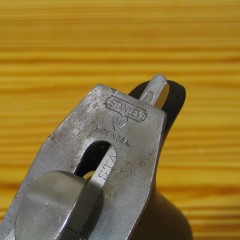My father has had an extensive cooking knife collection for a long time, but for some reason he never purchased any sharpening stones. I thought some Arkansas stones would make an excellent Christmas gift this year, so I ordered him 3, soft, hard, & black. The stones were excellent, but the boxes they came in were less than desirable, so I decided to make some more appropriate ones.
Continue Reading…
I purchased a 18″ x 24″ surface plate before Christmas, to replace the little 12″ x 18″ one a friend gave me several years back. It’s a Grizzly so it wasn’t super expensive, but I still want to protect it from the hazards in my shop. It’s been sitting on the bench covered with the ugly and flimsy shipping crate it came in. Last week, I finally got around to making a much strong and prettier cover for it.
The sides are Birch, mitered at the corners, and reinforced with Black Walnut keys. The top is 3/8″ Baltic birch plywood, that sets flush with the top of the sides in a rabbit. To make it a little more pleasant to handle, I gave the corners a 1/2″ round-over, and all the other edges a 1/4″ round-over. It’s probably a futile gesture, but to try and protect it from the inevitable cutting oil, lubricating oil, and other random things that might get spilled on it, I gave it several coats of a home brew whipping spar varnish.
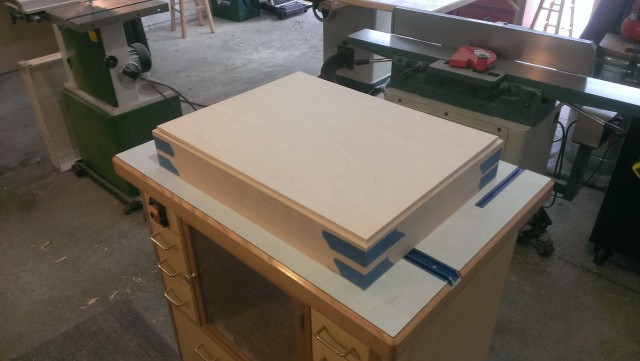
mock-up
Continue Reading…
The final 2014 Christmas present I had to make, was a frame for a new entry mirror. Since I was going to use some notoriously difficult to work species, I decided I would document the built. The Body of the frame is Wenge, and the keys are made from some Gaboon Ebony I pull out for special projects. I’ve used the combination of Wenge and Gaboon before, but not on the scale of this project, and I have to say I really love The way it turned out. As a side note, hopefully this video is a little better than the last one.

The finished Mirror
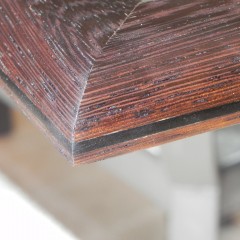
Gaboon Ebony key
The other night I was working on a project in the shop, and since I finished what I was working on early I decided to make something to organize my lathes change gears. Making stuff like this is why I love owning and using tools. I started with a rough idea, and just made everything else up as I went along. In less than an hour, I had made something that fixed an issue that’s been nagging for as long as I’ve owned the lathe (10 years).
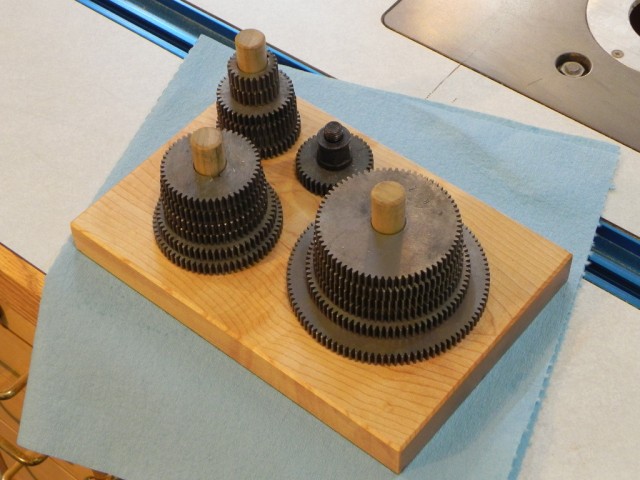
A Recent forum post I read got me thinking about about the myriad of tools used for measuring and layout. It’s truly amazing how many different types of tools people use, and the reasons they use them. Thus in the spirit of the forum post, I’m going to show the tools I use, and explain why I prefer them to other options.
Marking Tools
I have a range of marking tools in my shop as seen below. Four laying out cut lines on rough boards before breaking them down I use a run of the mill carpenters pencil. It’s easy to sharpen, makes nice thick highly visible lines, and it holds up well to the abuse associated with the work it’s used for. For layout work post the initial milling, I use a 0.5mm mechanical pencil. The fine mark it leaves is great for accurately laying out final dimensioning cuts.
Unlike the carpenters pencil, it’s fragile, and thus it requires a little more care while using. For example, its very easy to break the lead while marking on large pore woods, if to much pressure is applied. For dark color woods where the mark left by a regular pencil is hard to see I use colored pencils. I want to be clear that these aren’t children’s colored pencils, but artists ones that cost two or three dollars each. They dull quickly because they are soft, but if you keep them sharp, they provide highly visible lines.
For hand tool work I use traditional marking tools. For marking with the grain I use a scratch awl. Though the one I have works, I’d prefer one with a grip more like that of a pencil as well as a shorter shaft, because I feel those to features would offer more control. For general cross grain work I use a spear point marking knife that I picked up on eBay. For cross grain work Like marking out dovetail baselines, I currently use a Veritas wheel marking gauge. The wheel gauge is a good tool, but I prefer a more traditional knife tip blade for harder woods. The knife tip blade seems to severe the wood fibers more easily than a wheel.
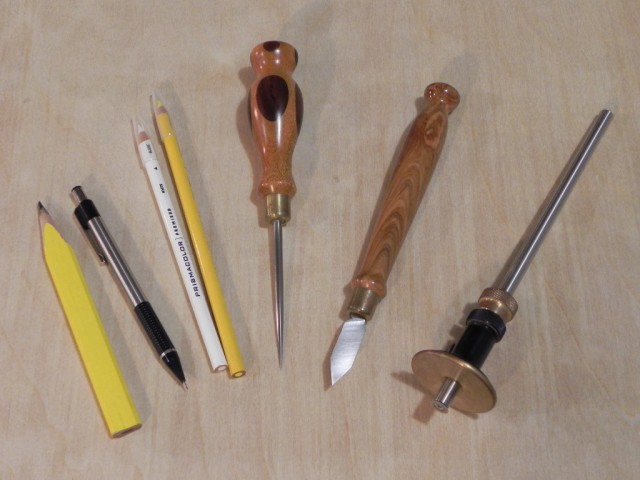
Continue Reading…

